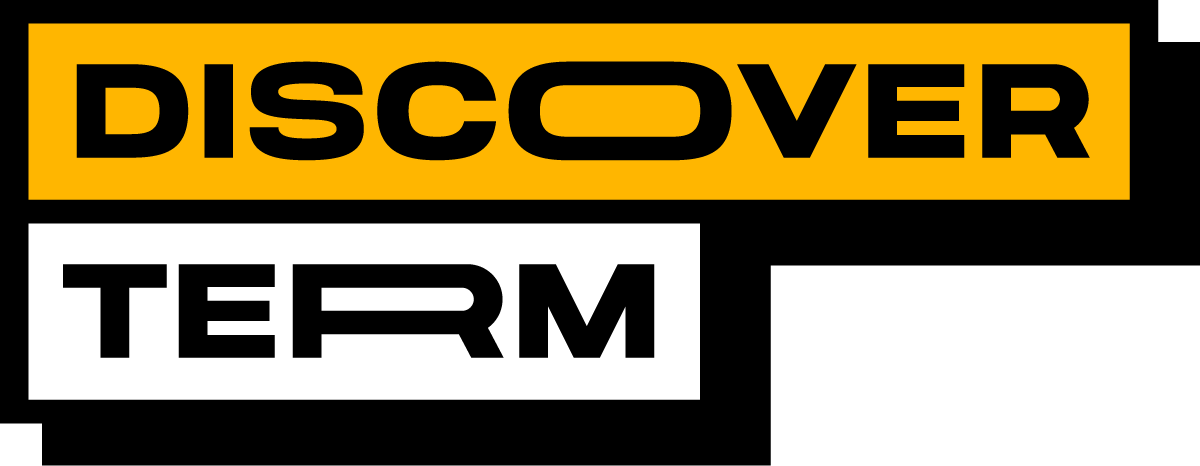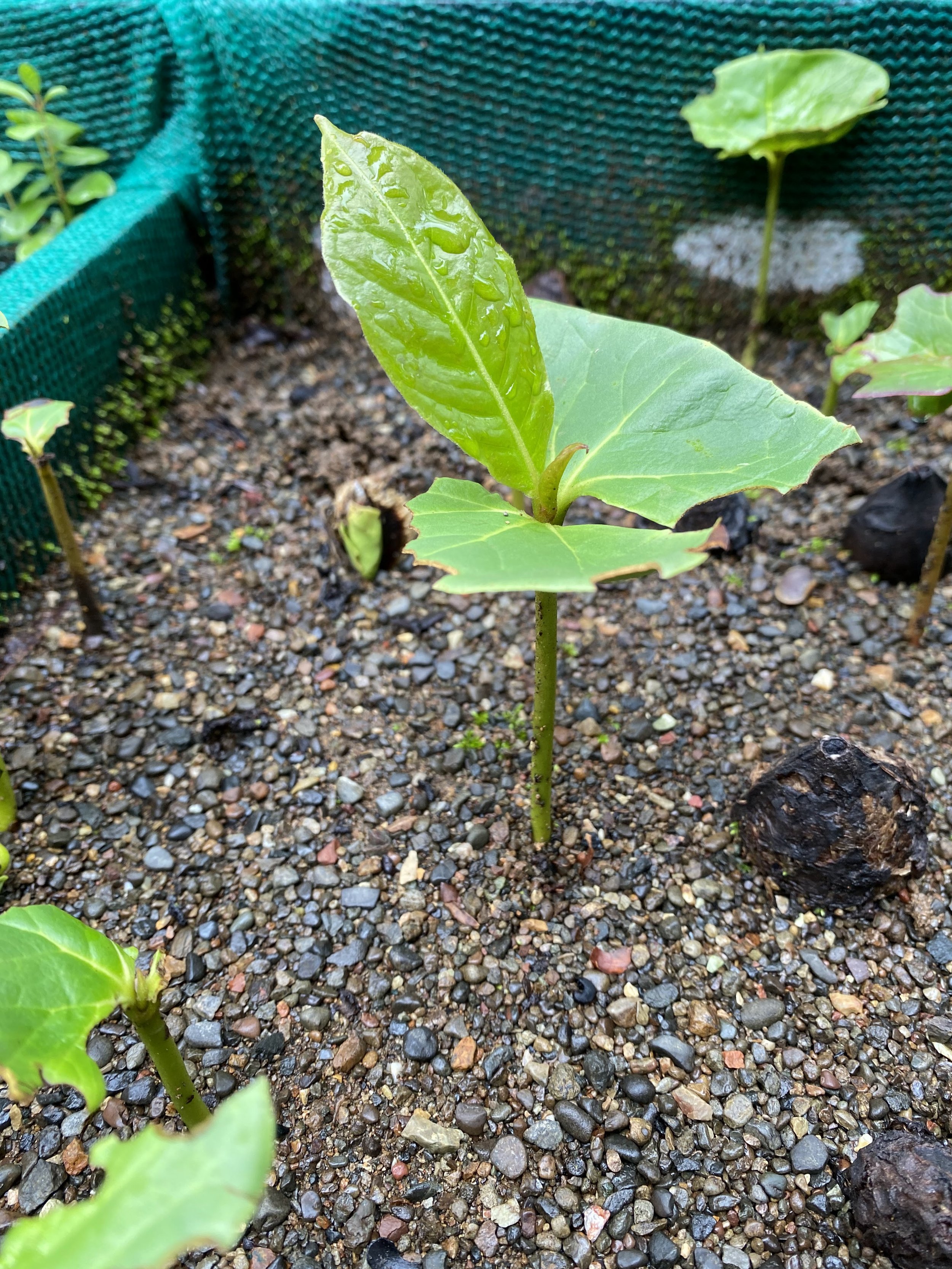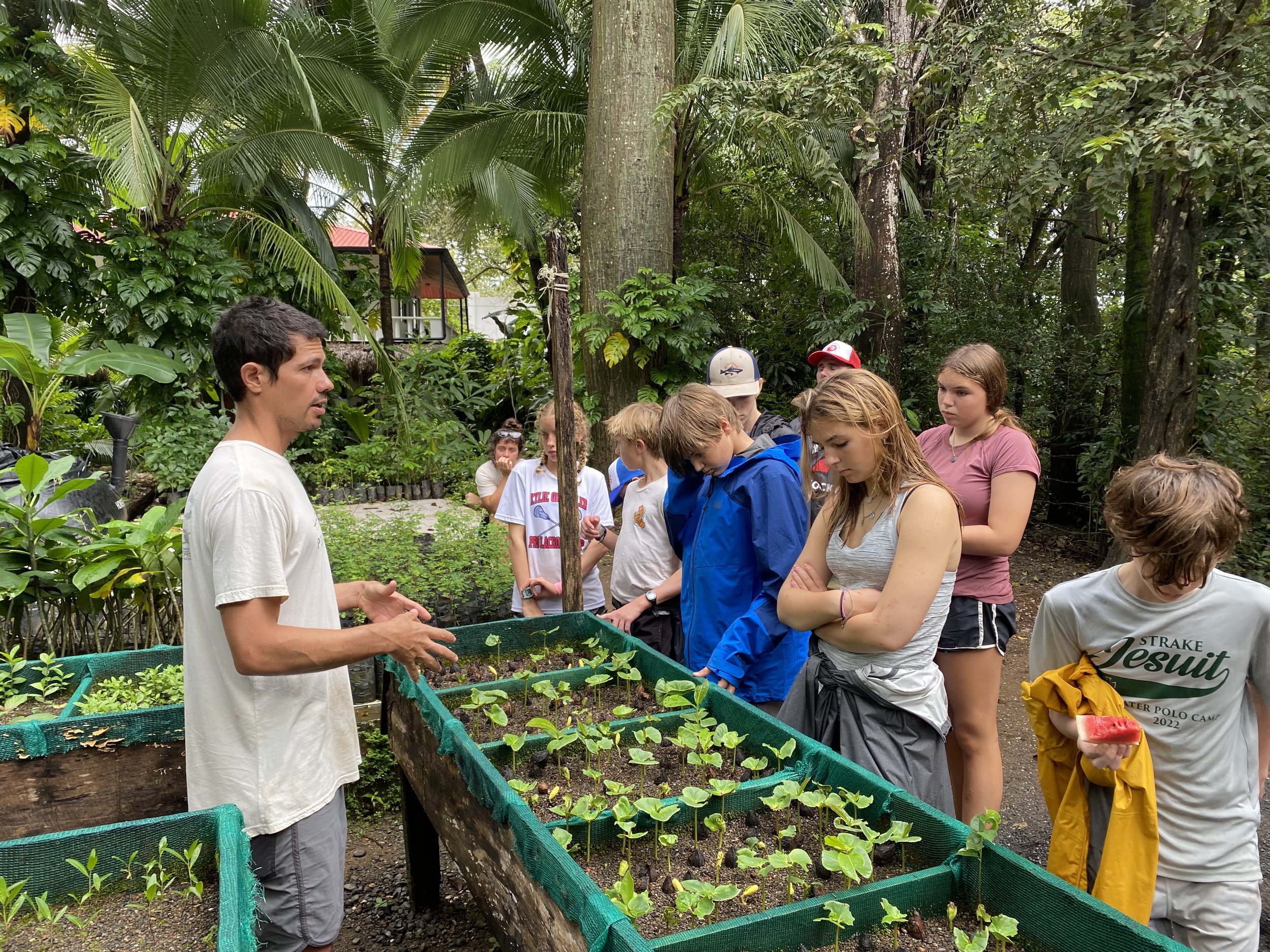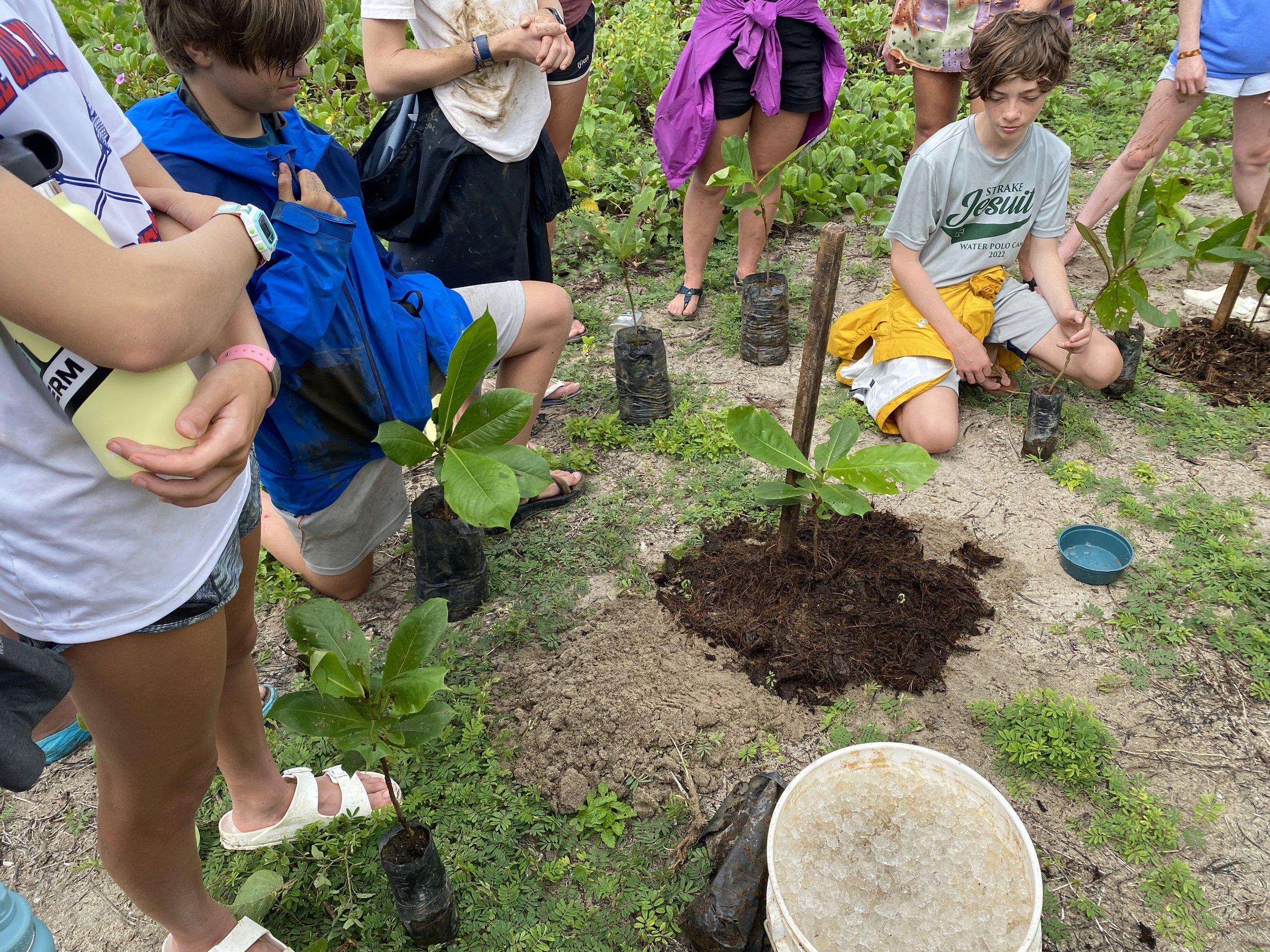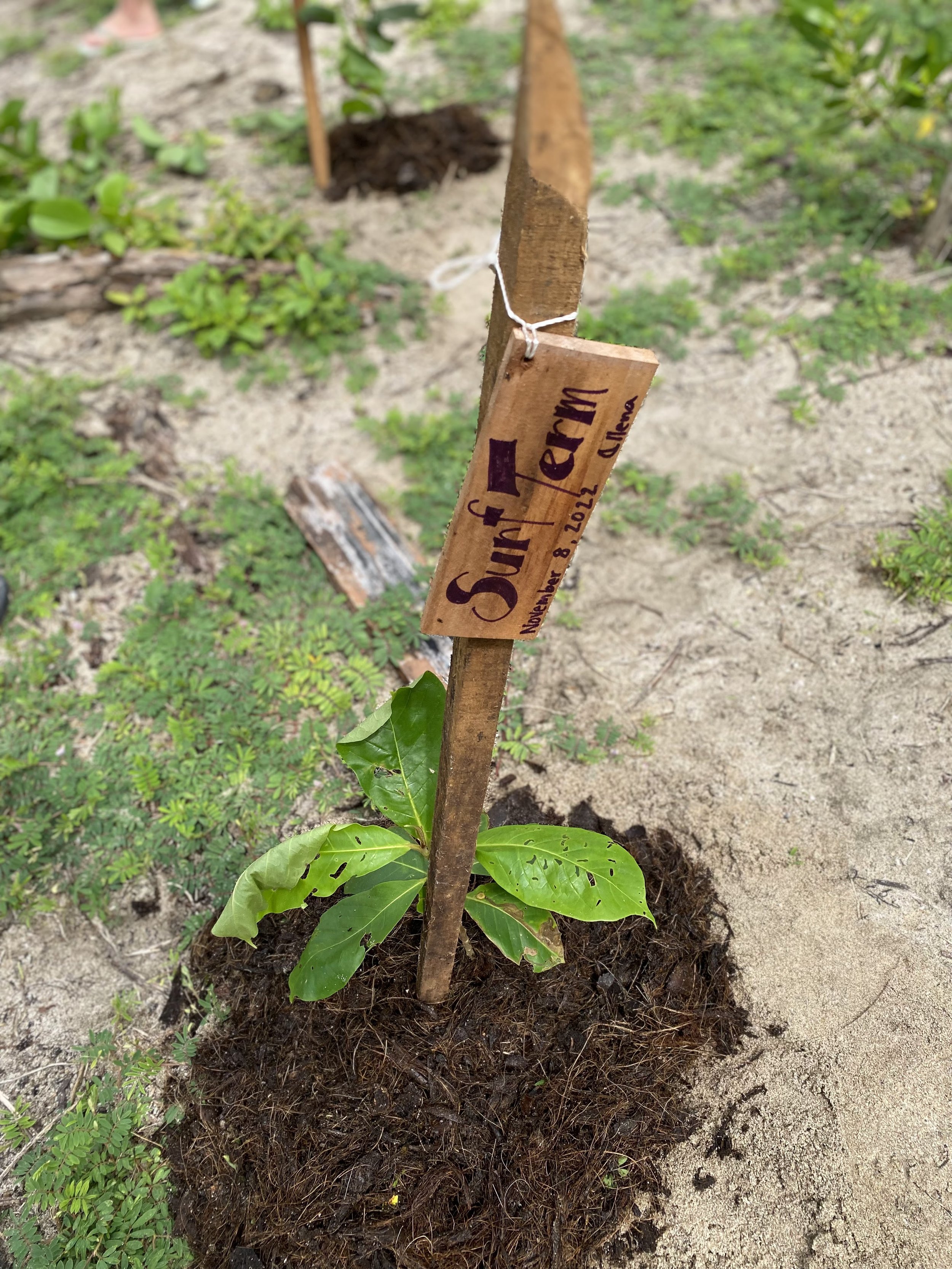Project Rainforest: Conservation, Restoration, Preservation
At Surf Term In Nosara, Costa Rica, every day begins with the sounds of tropical birds singing in the trees outside. After students have gotten out of bed, brushed their teeth, and gotten their rashguards on for our sunrise surf session, they step out into vast greenery! Palm trees, big leaves, and vines contribute to the lushness of this unique space. The walk from Safari Surf School, our surf home base, to the beach is through a green canopy of tropical flora, fauna, and students are sometimes greeted by the enchanting morpho butterfly, colorful macaw birds, and bandit-like coatis! While it's sometimes hard to believe these lands and species are threatened, tourism and development projects are negatively impacting these species and driving them out of the area and their homes.
This is where the students of Surf Term come in.
Project Rainforest
In Project Rainforest, the students work in teams to research:
How much rainforest do we need?
Is this a local or a global problem?
How much is a forest worth? Who pays for conservation?
Are preservation decisions a calculation or an emotion?
To help answer these questions, Surf Term partners with a local organization called Costas Verdes - translating to "green coasts." Costas Verdes works to restore devastated coastal ecosystems from past human impact through reforestation projects and the empowerment of local communities.
About Costas Verdes
Last year during Surf Term, we spent a day with Costas Verdes visiting their tree nursery, learning about the native species they are bringing back, and then headed down to the beach to plant several trees! The deep passion for the jungle and the locals' ecosystems in Costa Rica is inspiring and palpable.
Costa Verdes relies on community involvement to live their mission, and they work with local schools, universities, local governments, NGOs, and businesses to create a sense of stewardship and responsibility. Since 2009, they have planted over 70,000 trees and reintroduced more than 50 native species!
As the students split into groups, they study different types of rainforests in Central America and ponder: where should we, as a world, spend most of our effort?
Preservation (protect wild places from humans)
Conservation (rules and processes like eco-tourism)
Restoration (build back what we have destroyed)
This, of course, leads to personal exploration - where and how can we as individuals make a positive impact and affect change? Along the way, moral dilemmas will come into play---should we save a local logging business whose employees rely on the income? Or save the forest?
The unit ended with each group sharing the type of rainforest they had studied, that specific type or forest's main threat, and their proposed ideas for improving intervention. These ideas were presented to local surfers, tree planters, and neighbors.
Project Rainforest’s Main Lesson
Everything we do matters. The students of Surf Term went home to their families encouraging shorter showers, reducing plastic use, and picking up trash on the streets because their time on Playa Guiones showed them that the decisions they make at home have a direct impact on the environment - especially those closest to our oceans.
